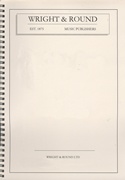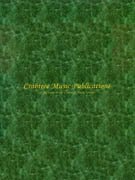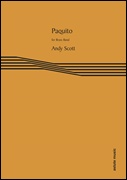Results
-
 £26.50
£26.50My Old Kentucky Home (Solo cornet/Brass Band)
Cornet solo with brass band
Estimated dispatch 7-14 working days
-
 £26.50
£26.50My Pretty Jane (Solo Cornet/Brass Band) - Hartmann, John
Cornet Solo with brass band
Estimated dispatch 7-14 working days
-
 £26.50
£26.50Nightingale, The (Solo Cornet/Brass Band)
Solo Cornet with Brass Band
Estimated dispatch 7-14 working days
-
 £26.50
£26.50Nuns Chorus (Solo Cornet/Brass Band) - Strauss, Johann
Cornet solo with brass band
Estimated dispatch 7-14 working days
-
 £59.99
£59.99ONCE UPON A TIME IN THE WEST (Soprano Cornet/Brass Band) - Morricone, Ennio - Duncan, Andrew
Soprano Cornet Solo & Brass Band. Duration: 3:00 Grade: Medium
Estimated dispatch 7-14 working days
-
 £42.95
£42.95ONE FINE DAY(Soprano Cornet/Brass Band) - Puccini, Giacomo - Richards, Goff
Soprano Cornet Solo & Brass Band. From "Madama Butterfly"
Estimated dispatch 7-14 working days
-
 £37.95
£37.95PANIS ANGELICUS (Cornet, Euphonium or Trombone/Brass Band) - Franck, Cesar - Wright, Frank
Solo for Cornet, Euphonium or Trombone with Brass Band
Estimated dispatch 7-14 working days
-
 £24.95
£24.95PAQUITO (Cornet Section feature with Brass Band Parts) - Scott, Andy
Brass Band parts only. 'Paquito' pays homage to the brilliant composer/saxophonist/clarinetist Paquito D'Rivera. It is a fast salsa, based around a two-three clave pulse, and is virtuosic showcase for the cornet section. Dur: 3:00
Estimated dispatch 7-14 working days
-
 £15.00
£15.00PAQUITO (Cornet Section feature with Brass Band Score) - Scott, Andy
Brass Band score only. 'Paquito' pays homage to the brilliant composer/saxophonist/clarinetist Paquito D'Rivera. It is a fast salsa, based around a two-three clave pulse, and is virtuosic showcase for the cornet section. Dur: 3:00
Estimated dispatch 7-14 working days
-
 £26.50
£26.50Paragon, The (Solo cornet/Brass Band)
Cornet solo with brass band
Estimated dispatch 7-14 working days
